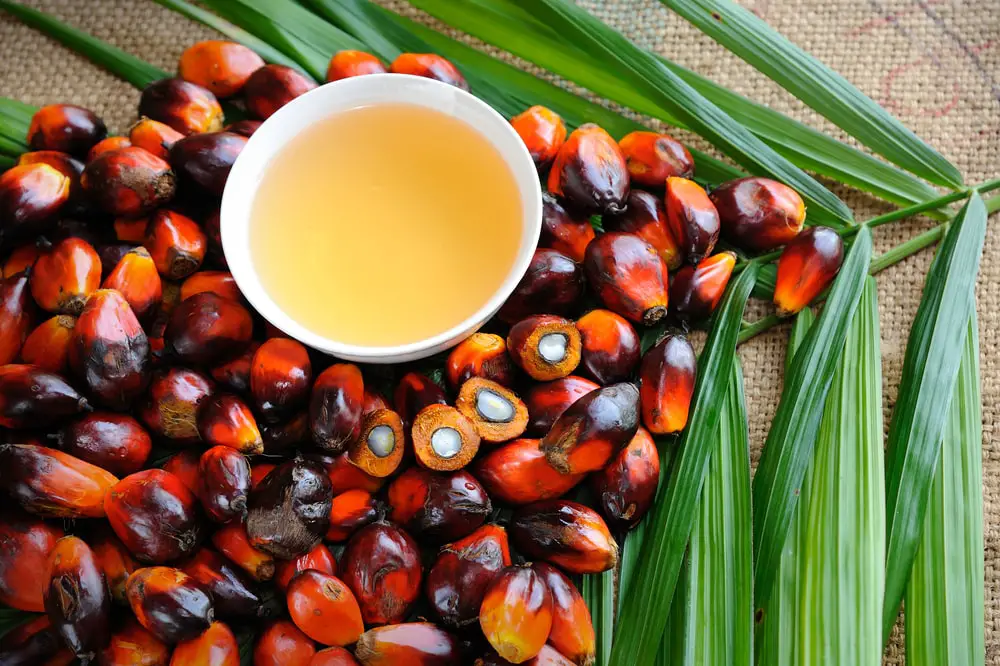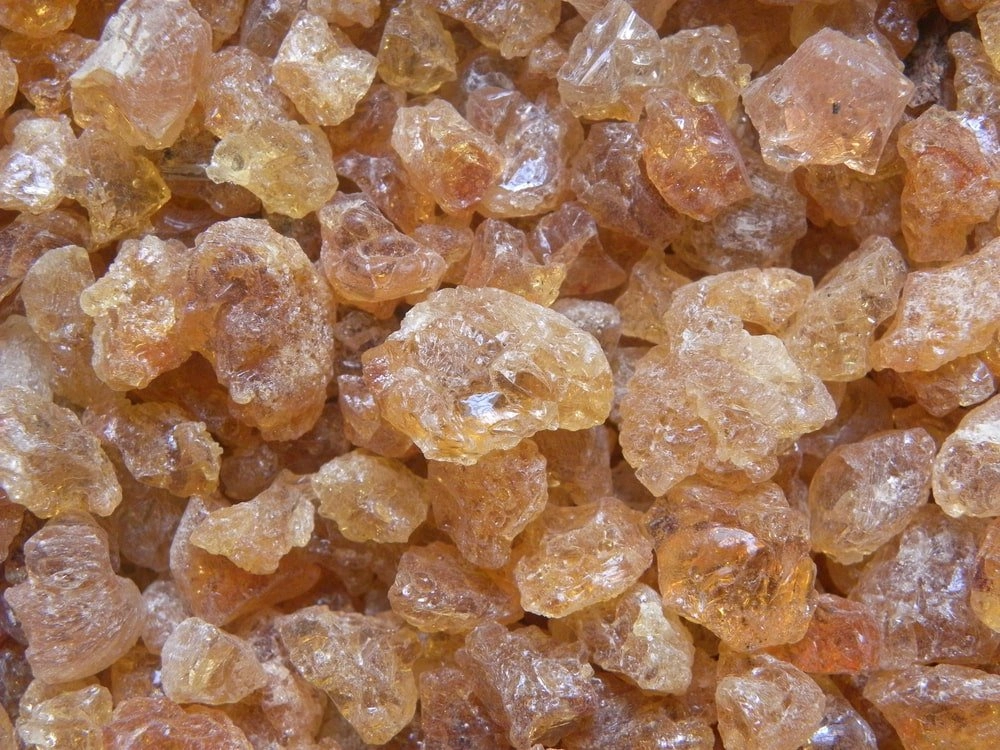When you hear about palmitic acid, the first thing that comes to mind is palm oil. This is the main source of palmitic acid. While there are issues with how palm oil is harvested, this doesn’t always apply to the uses in skincare and cosmetics.
This post may contain affiliate links. Read the full disclosure here
Palmitic acid is usually derived from palm oil but that’s not the only way to enjoy the benefits! This fatty acid is also in natural oils such as marula oil, argan oil, coconut oil, and soybean oil.
Let’s take a deeper look at why palmitic acid is useful for the skin.
What is Palmitic Acid?
Palmitic acid is a fatty acid that acts as an emollient, cleansing agent, and texture enhancer in skincare and cosmetics products.
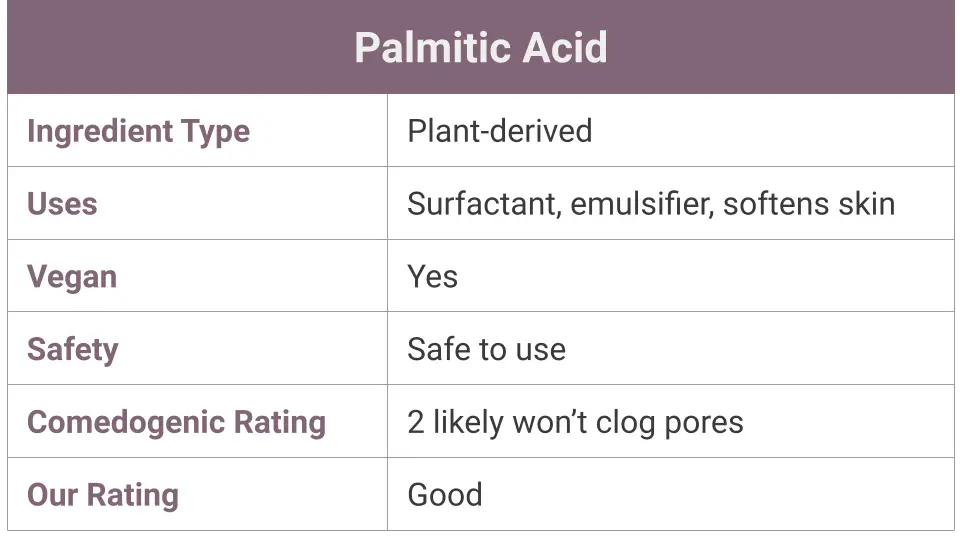
Also known as hexadecanoic acid, palmitic acid is the most common saturated fatty acid in plants, animals, and microorganisms. This acid is naturally found in the human body, even in the skin.
The most common source of palmitic acid is palm oil but it’s also in other vegetable oils. It is produced by the hydrolysis and fractionation of palm oil, tallow oil, coconut oil, Japan wax, Chinese vegetable tallow, and spermaceti.
It’s a fatty acid that acts as an emollient in moisturizers and as a cleansing agent in cleansers. It’s combined with many palmitate ingredients, such as isopropyl palmitate.
Palmitic Acid Skin Benefits
This fatty acid can help soften and smooth the skin, help retain moisture, protect, and improve product texture. Since it offers a wide range of skin and formulation benefits, it’s found in many different product categories.
Palmitic acid is in cleansers, serums, creams, face cleansers, and more.
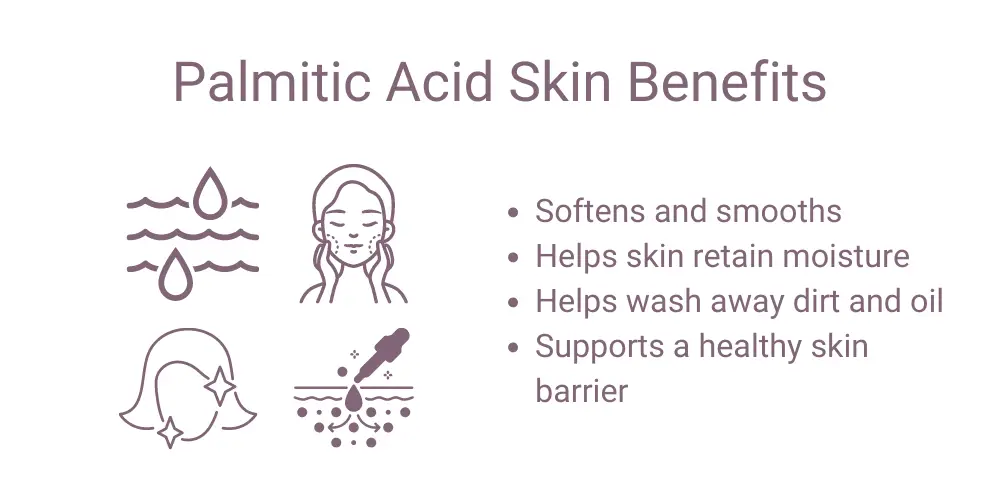
Soften and Smooth
Palmitic acid helps soften and smooth the skin. It’s an emollient in moisturizers, lotions, and creams to help soften dry flakey skin.
Retain Moisture
The emollient properties of palmitic acid help the skin retain moisture. It helps strengthen the skin barrier to help prevent moisture loss from the skin.
Emollients form a protective layer on the surface of the skin to trap moisture. This helps the skin retain hydration for a plump, youthful complexion.
Surfactant
Palmitic acid is also in cleansers and body wash since it helps wash away dirt and oils in the skin.
Emulsifier
Emulsifiers are critical in product formulations that contain both water and oil-based ingredients. Naturally, water and oil don’t mix. Emulsifier ingredients such as palmitic acid can help ingredients stay together, preventing separation.
Opacity
Palmitic acid is also an opacifying agent. It can change a product from clear, or transparent to opaque. This unique attribute is useful in cosmetics such as foundation and concealer.
Is Palmitic Acid Safe?
The Cosmetic Ingredient Review Panel considers palmitic acid safe to use in skincare and cosmetics with current concentrations. One analysis found palmitic acid did not cause any dermal irritation in concentrations of 50%.
Given that product formulations are usually less than 20%, this ingredient should be safe, even for sensitive skin. It can dry out the skin when formulated with certain ingredients, but this is generally not a concern.
While palmitic acid is safe topically, consuming palmitic acid is another story. Consuming too much palmitic acid can be harmful. When consumed it can raise LDL cholesterol which increases the risk of cardiovascular disease.
One study linked the consumption of palmitic acid to a higher risk of obesity and insulin resistance.
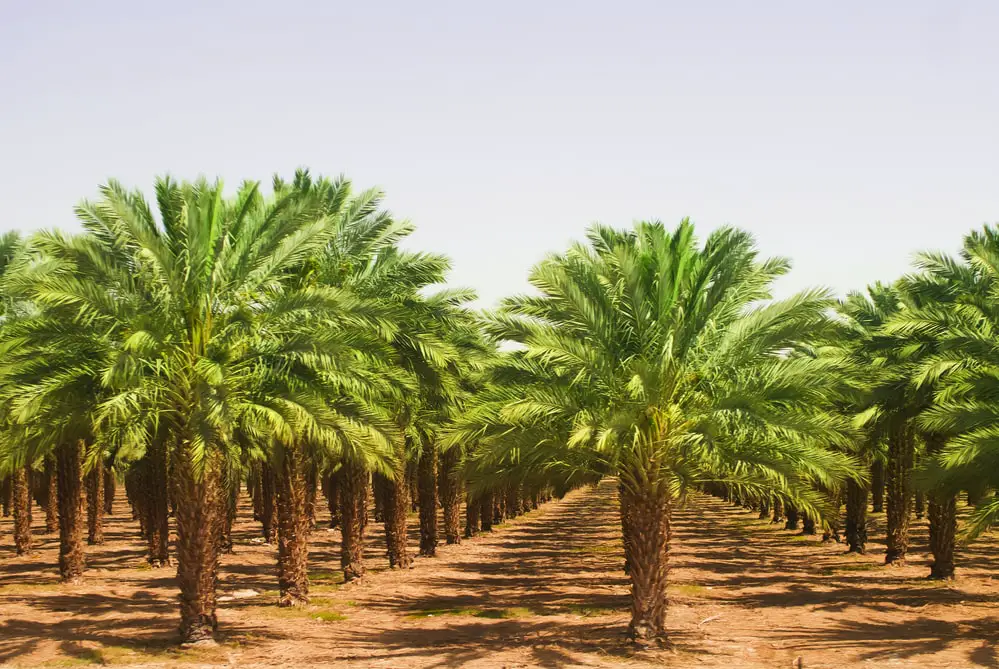
Is Palmitic Acid Bad For The Environment?
One of the main sources of palmitic acid is palm oil, which has significant social and environmental impacts. The need to expand farms to meet the rising demand for palm oil has led to the destruction of rainforests.
This deforestation puts pressure on species ability to survive. When the habitats are disturbed and rainforests are destroyed, some animals may risk extinction. Palm oil is a driver in destroying the habitats for endangered animals such as the Orangutan, pygmy elephant, and Sumatran rhino.
The large-scale removal of trees also has implications on the Earth’s atmosphere. Deforestation releases carbon making global warming even worse.
So what’s the answer if you want to use palm oil? Use products that source from sustainable methods that don’t harm the environment. Or get palmitic acid from other natural oils such as argan oil, coconut oil, soybean oil, or marula oil.
Palmitic Acid Comedogenic Rating
Palmitic acid has a comedogenic rating of 2. This is considered non-comedogenic, meaning it likely won’t clog pores. Those battling acne, blemishes, or clogged pores should opt for non-comedogenic products.
The comedogenic rating system is based on a score of 0 to 5. The higher the rating, the more likely it is to clog your pores. While this rating system sounds straightforward, it’s not always the case.
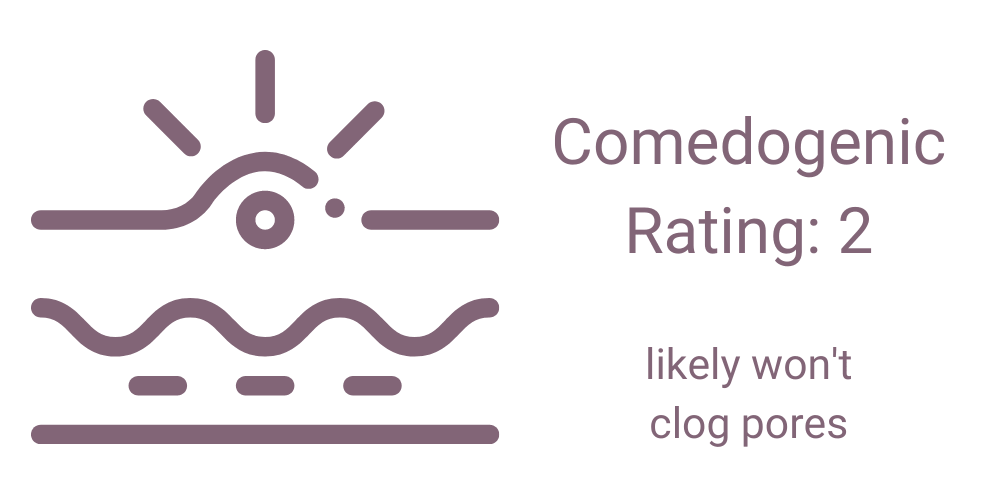
For instance, a product made with only non-comedogenic ingredients could be comedogenic. On the flip side, a product that includes some comedogenic ingredients could also be non-comedogenic. Specific ingredients are important, but the product formulation is what really matters.
The comedogenic rating system is a good rule of thumb, especially for comparing ingredients to one another. But it’s far from perfect.
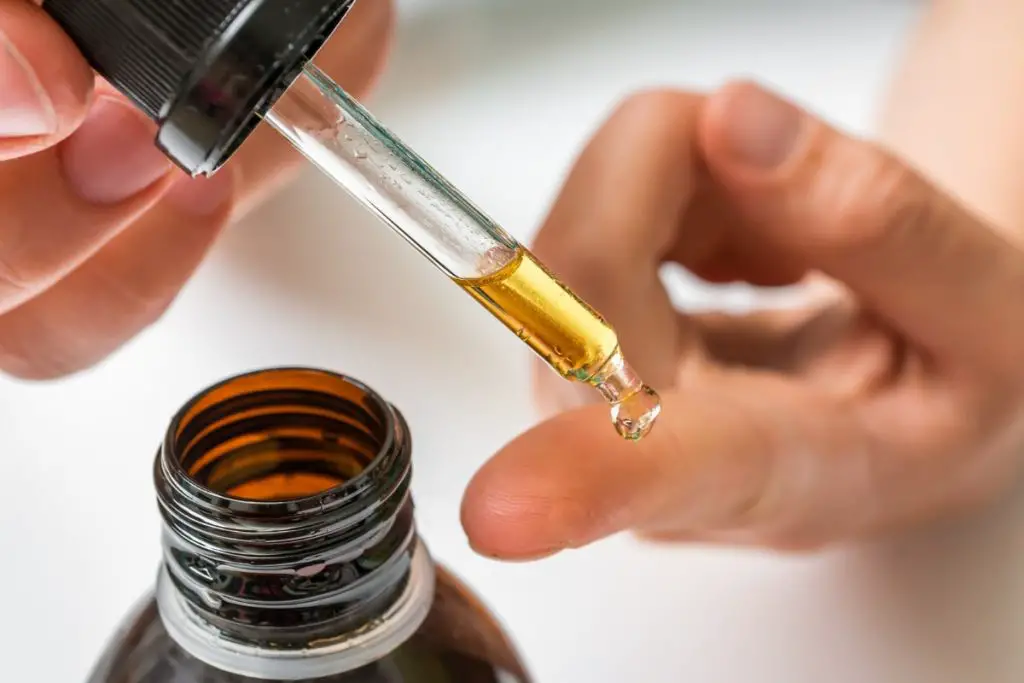
Oils High in Palmitic Acid
Palmitic acid is often associated with palm oil, but that’s not the only natural oil that contains this fatty acid. Here are some of the most popular oils high in palmitic acid:
- Palm Oil – 44% palmitic acid, also contains stearic acid, linoleic acid, and linolenic acid.
- Olive Oil – up to 20% palmitic acid, also contains stearic acid, oleic acid, and linoleic acid.
- Soybean Oil – 15% palmitic acid, also contains oleic acid, linoleic acid, and stearic acid
- Marula Oil – 14% palmitic acid, also contains oleic acid, linoleic acid, and nervonic acid.
- Argan Oil – 12% palmitic acid, also contains oleic acid, linoleic acid, linolenic acid, and stearic acid.
- Coconut Oil – 8% palmitic acid, also contains lauric acid, myristic acid, stearic acid, and oleic acid.
How Does Palmitic Acid Compare to Other Fatty Acids?
It’s common to see palmitic acid along with other fatty acids such as stearic acid, lauric acid, and myric acid. But what’s the difference between these fatty acids?
Stearic acid is another saturated fatty acid. It offers similar benefits for the skin. It helps form a protective layer on the skin that helps prevent moisture loss.
Lauric acid is one of the main fatty acids in coconut oil. It’s a useful ingredient to support acne treatment since it has antibacterial properties. It’s also useful in skincare as a cleansing agent, for soothing the skin, and anti-aging benefits.
Myric acid is a saturated fatty acid similar to palmitic acid. Myric acid is a useful cleansing agent, helps hydrate the skin, and is an opacifying agent. These benefits make it popular in skincare and cosmetic products.
Frequently Asked Questions
Find answers to some of the most frequently asked questions about palmitic acid for the skin.
Related Articles You Might Like:

